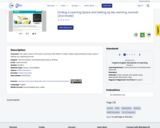
This video is part of the Learn and Grow with WHRO TV series. Watch Alystra Barefoot teach about setting up a learning journal.
- Subject:
- English Language Arts
- Material Type:
- Lesson
- Date Added:
- 06/15/2021

This video is part of the Learn and Grow with WHRO TV series. Watch Alystra Barefoot teach about setting up a learning journal.
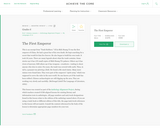
This is an excerpt from "Tomb Robbers." Ch’in Shih Huang Ti was the first emperor of China. He had a great fear of his own death. He kept searching for a secret that would let him live forever. He also began to build his own tomb. It took 30 years. There are many legends about what the tomb contains. Some stories say it has 270 small copies of Shih Huang Ti’s palaces. Others say it has rivers of mercury. Still others say it has weapons—crossbows—waiting to shoot anyone who tries to enter. For years, the tomb was covered with earth. Then, in 1974, a peasant was plowing a field. He found a life-sized statue. Many more statues were found later. They were part of the emperor’s “spirit army,” which was supposed to serve the ruler in the next world. No one knows yet if the tomb has been robbed. Chinese archaeologists are still digging up the area. They are working very slowly and carefully. (McDougal Littell The Language of Literature, 2002)
This lesson was created as part of the Anthology Alignment Project, during which teachers created CCSS-aligned lessons for existing literary and information texts in anthologies. All page numbers and unit/week designations found in this lesson relate to the edition of the anthology named above. If you are using a trade book or different edition of this title, the page/unit/week references in this lesson will not match. Consult the content referenced in the body of the lesson to determine appropriate page numbers for your text.
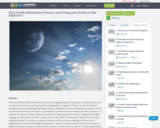
The First Grade Elementary Framework for Science and Integrated Subjects, Sky Explorers uses observation of the sun and moon in the sky as a phenomena for exploring patterns of objects in the sky.
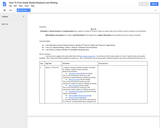
Students will be involved in a group research of "How to" books and videos. Then, they will create their own "How to" writing using See Saw as their on-line creation "house". Students will work in collaborative groups during the entire process and learn how to complete the task as a team. Students will be given daily feedback from their teacher as well as final peer and teacher feedback.
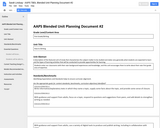
Students enter our classrooms with their own background experiences and knowledge, this unit allows them to dig deeper in one area of expertise to teach the reader "How To" perform a task.
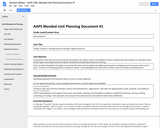
This unit will be designed to be taught concurrently with other units throughout the beginning (1st quarter and beginning of 2nd quarter) of the school year. It will focus on teaching grammar concepts in context. Front-loading grammar instruction has been a focus of the district ELA department.
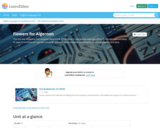
Students read literary and informational texts about knowledge and intelligence to understand what happens when humans try to manipulate the minds of others and how our understanding of intelligence has evolved over time. Students express their understanding of these ideas by exploring how authors draw on traditional stories and develop characters and themes to teach us about ourselves and others.
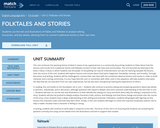
This unit continues the yearlong theme of what it means to be a good person in a community by pushing students to think about how the lessons and morals from traditional stories and folktales connect to their own lives and communities. The unit launches by listening to the book A Story, A Story, in which students see the power of storytelling not only for entertainment, but also for learning valuable life lessons. Over the course of the unit, students will explore lessons and morals about hard work, happiness, friendship, honesty, and humility. Through discussion and writing, students will be challenged to connect their own lives with the sometimes-abstract lessons and stories in order to build character and a strong community. It is our hope that this unit, in connection with other units in the sequence, will help students internalize the idea that we not only learn from our own experiences, but we also learn and grow by hearing the experiences of others.
In reading, this unit builds on the foundation set in unit 1. Students will continue to practice asking and answering questions about key details in partners, individually, and in discussion, although questions will require a deeper and more nuanced understanding of the text than in unit 1. Students will learn to use the text and illustrations to both identify the setting of a story and think about why the setting is important to the story. Students will also be pushed to deeply analyze characters traits, actions, and feelings and how those change and evolve over the course of the story. Once students have a deep understanding of the setting and character motivation, students will grapple with figuring out the lessons the characters learn and how they learn them. Finally, in this unit students will begin to notice the nuanced vocabulary authors use to help a reader visualize how a character is feeling or acting.
In writing, students will continue to write daily in response to the text. The focus of this unit is on ensuring that students are answering the question correctly and using correct details from the illustrations and text to support their answer.
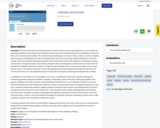
This unit continues the yearlong theme of what it means to be a good person in a community by pushing students to think about how the lessons and morals from traditional stories and folktales connect to their own lives and communities. The unit launches by listening to the book A Story, A Story, in which students see the power of storytelling not only for entertainment, but also for learning valuable life lessons. Over the course of the unit, students will explore lessons and morals about hard work, happiness, friendship, honesty, and humility. Through discussion and writing, students will be challenged to connect their own lives with the sometimes-abstract lessons and stories in order to build character and a strong community. It is our hope that this unit, in connection with other units in the sequence, will help students internalize the idea that we not only learn from our own experiences, but we also learn and grow by hearing the experiences of others. In reading, this unit builds on the foundation set in unit 1. Students will continue to practice asking and answering questions about key details in partners, individually, and in discussion, although questions will require a deeper and more nuanced understanding of the text than in unit 1. Students will learn to use the text and illustrations to both identify the setting of a story and think about why the setting is important to the story. Students will also be pushed to deeply analyze characters traits, actions, and feelings and how those change and evolve over the course of the story. Once students have a deep understanding of the setting and character motivation, students will grapple with figuring out the lessons the characters learn and how they learn them. Finally, in this unit students will begin to notice the nuanced vocabulary authors use to help a reader visualize how a character is feeling or acting. In writing, students will continue to write daily in response to the text. The focus of this unit is on ensuring that students are answering the question correctly and using correct details from the illustrations and text to support their answer.

What does formative assessment look like during distance learning? Without proximity, how can teachers gather and act on “in-the-moment” information – the behaviors, emotions, and situations that affect learning and inform instruction?
This resource provides explanations, sample questions, and possible actions to implement formative assessment during distance learning scenarios.
Image by Peggy und Marco Lachmann-Anke from Pixabay
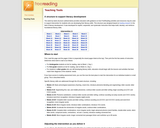
FreeReading is an open source instructional program that helps educators teach early literacy. Because it is open source, it represents the collective wisdom of a wide community of teachers and researchers. FreeReading contains, Intervention A, a 40-week scope and sequence of primarily phonological awareness and phonics activities that can support and supplement a typical kindergarten or first grade "core" or "basal" program.
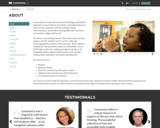
CommonLit is a nonprofit education technology organization dedicated to ensuring that all students, especially students in Title I schools, graduate with the reading, writing, communication, and problem-solving skills they need to be successful in college and beyond.

This unit asks students to consider the permissible restrictions schools can place on students’ freedom of speech, as they learn about the (fictional, but realistic) case of Davis v. Ann Arbor School Board. Students will either conduct a mock negotiation in which they will try to resolve a First Amendment-related conflict between a student and his public high school, or a mock argument in which they will argue for one side in front of a panel of student judges.
This Unit contains 9 lessons:
Lesson 1: Are schools permitted to limit students’ First Amendment freedom of speech?
Lesson 2: Under what circumstances may a school punish student speech?
Lesson 3: How does the law apply to our case?
Lesson 4: What are the key elements of negotiation?
Lesson 5: How can parties use negotiation to achieve the best solution?
Lesson 6: Is negotiation an effective tool in the legal process?
Lesson 7: What is a mock argument?
Lesson 8: How do I prepare for a mock argument?
Lesson 9: How do attorneys conduct oral arguments to advocate for their clients?
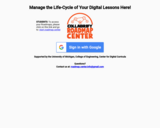
Students learn about frogs as they read, write play and create. Meet unique frogs and their special survival tactics and learn about the frog life cycle.
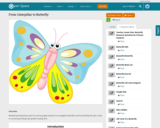
This is a unit plan about the life cycle of the butterfly that includes downloadable documents and links to resources.

After the Great Depression struck, Ford especially wanted to support ailing farmers. For two years, Ford and his team researched ways to use farmers’ crops in his Ford Motor Company. They discovered that the soybean was the perfect answer. Soon, Ford’s cars contained many soybean plastic parts, and Ford incorporated soybeans into every part of his life. He ate soybeans, he wore clothes made of soybean fabric, and he wanted to drive soybeans, too. The resource includes a lesson plan/book card, a design challenge, and copy of a design thinking journal that provide guidance on using the book to inspire students' curiosity for design thinking. Maker Challenge: Think about the people in your community and the challenges they face. List three challenges that affect their daily life. Consider something you use every day and brainstorm how it could be repurposed or modified to address this problem.
A document is included in the resources folder that lists the complete standards-alignment for this book activity.
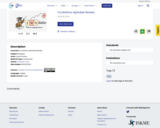
Fundations Alphabet Review
Look on the chart below. See if you can go through and say the Letter, Keyword, Sound by yourself aloud.
Finally, pick a letter from the chart and think of a different word that begins with that letter.

In this lesson the student will practice skills learned in Fundations to tap out and blend CVC words. This is important as a First Grader learns to build words to help build reading skills.
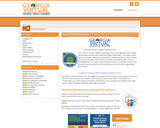
Several full course OER offerings in ELA, Math, Science, Social Studies, World Languages, Fine Arts

GIST is a strategy to help students write brief, accurate, and complete summaries of material they read. In this lesson students work together summarizing larger and larger portions of text, but keeping their summaries at 25 words or fewer. Students will be able to summarize portions of informational or literary text. Students will be able to work in small groups to think critically about and discuss text.